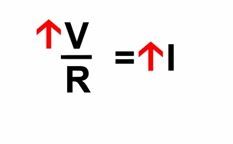![]()
![]()
![]()
Use LEFT and RIGHT arrow keys to navigate between flashcards;
Use UP and DOWN arrow keys to flip the card;
H to show hint;
A reads text to speech;
8 Cards in this Set
- Front
- Back
|
What are the voltage across and current through a component linked by? |
Resistance |
|
|
Whats the formula linking voltage and current?
|
v = i x r |
|
|
A 4 Ohm resistor in a circuit has a voltage across it of 6V. What is current? |
v = i x r |
|
|
What does a resistor do?
|
Opposes the flow of current and reduces it (across whole circuit) |
|
|
How do you measure resistance of a component? |
The resistance of a component can be found by measuring the current flowing through it, and the potential difference across it. Then use r = v / i |
|
|
How does the current flowing through a resistor at a constant tempertaure link to voltage? |
The current flowing through a resistor at a constant temperature is directly proportional to the voltage across it. This is Ohms law: voltage = current x resistance. For a fixed resistance, If you double the voltage you double the current. |
|
|
So, every appliance draws a different amount of current depending on its resistance. What does this do to power then? |
Power = VI |
|
|
Ohms law is a linear relationship, what does this mean?
|

The more volts you have the more current you'll get. Increase the voltage and get more current!! |

